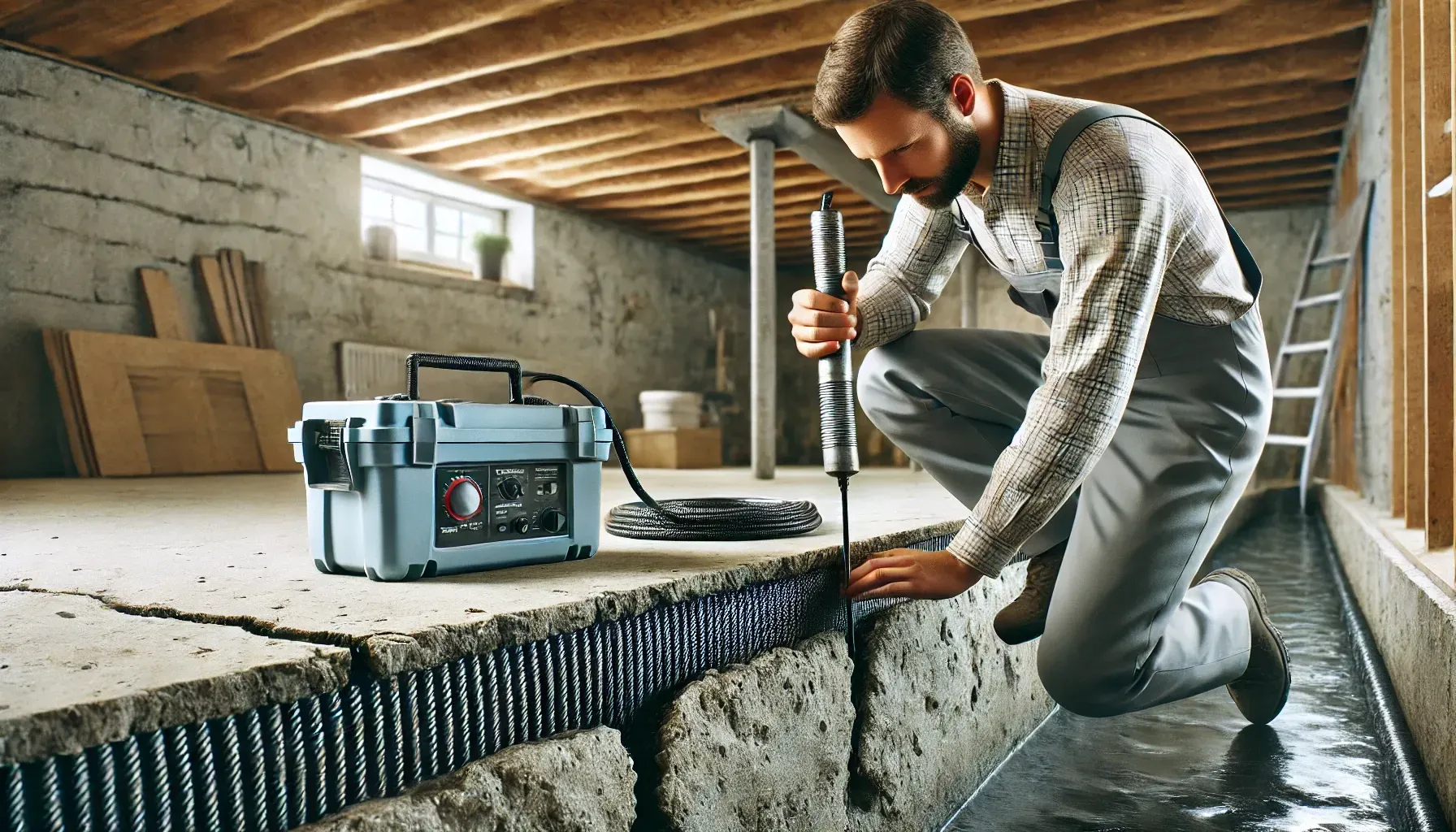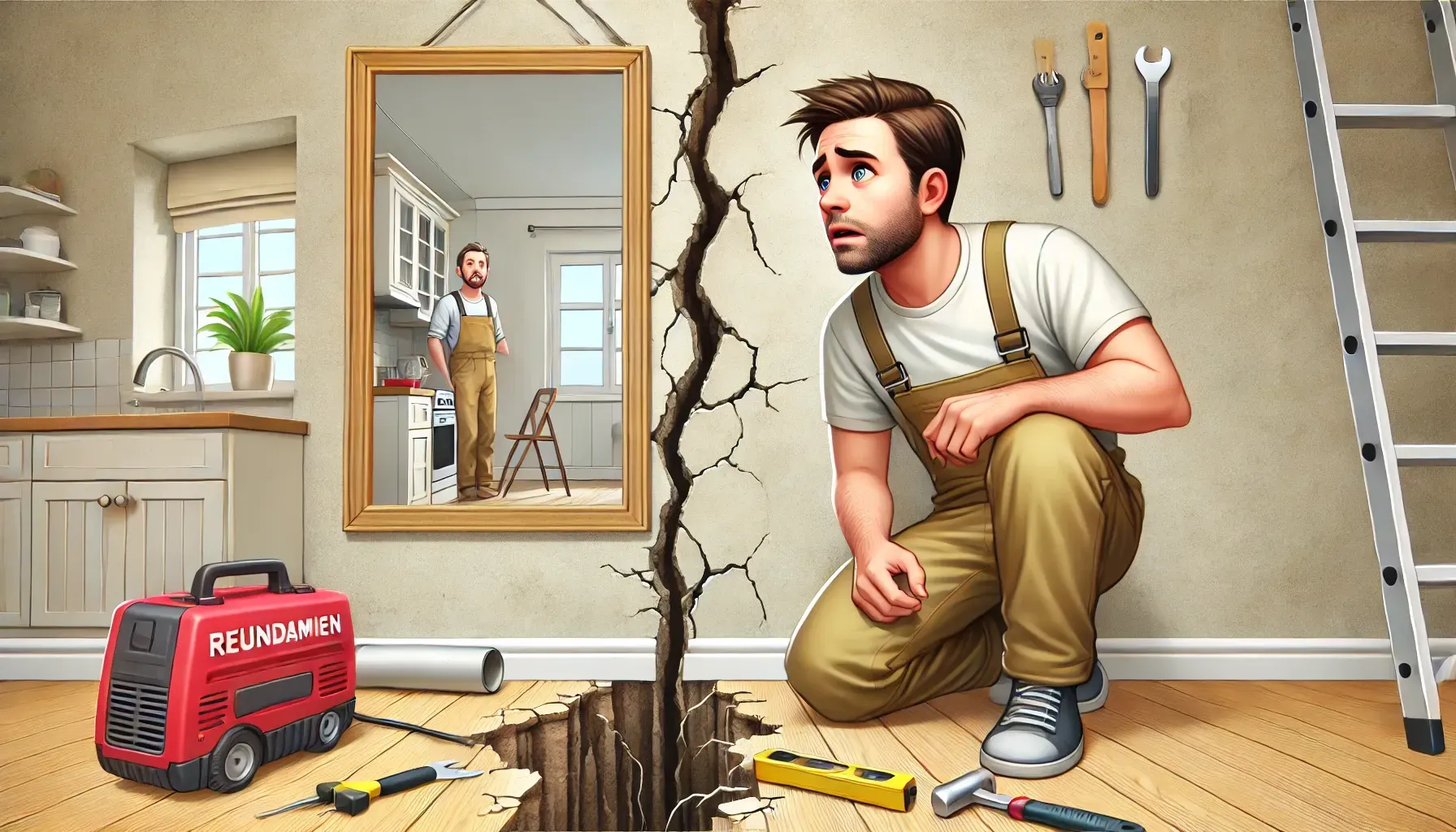Causes of Foundation Cracks, Signs of Cracks, How to Fix Foundation Cracks, Cost of Foundation Crack Repair
Everything You Need to Know About Foundation Crack Repair: From Causes to Costs
Let’s Talk Foundations – Literally and Figuratively
We don’t often think about our home’s foundation. It’s like the quiet hero of our property, silently doing its job day after day. But when cracks show up, it’s a wake-up call no homeowner can ignore. Foundation cracks can feel overwhelming, “How bad is it? Can I fix this myself? And how much is this going to cost me?”
Take a deep breath. Together, we’ll dive into the common causes of foundation cracks, how to spot them before they escalate, practical repair methods, and the real scoop on costs. Along the way, we’ll share relatable examples, a sprinkle of humor, and even a surprising stat or two to keep things lively.

Cracking Up: What Causes Foundation Cracks?
Picture this: your home’s foundation is like the boots on a rainy day. It protects everything above it, but it’s not invincible. Here’s what can cause those dreaded cracks:
1. Water – The Sneaky Culprit
Water is the ultimate shape-shifter, freezing, expanding, and eroding your foundation’s stability. Whether it’s poor drainage, heavy rainfall, or a burst pipe, excess moisture wreaks havoc. In fact, 80% of foundation issues in the U.S. are linked to water damage. Over time, this can lead to weakening of concrete and soil shifts around the foundation.
2. Soil Shenanigans
Did you know the soil beneath your home is always on the move? Expansive clay soil swells when wet and shrinks when dry, which can push and pull at your foundation. If you live in areas with fluctuating seasons (hello, Philly winters!), this could be a prime factor. Soil composition varies greatly, and improper site preparation can make the issue worse.
3. Time Takes Its Toll
Even the best-built homes aren’t immune to aging. Over time, materials like concrete can degrade, and tiny hairline cracks can expand into bigger problems. Weathering from exposure to the elements exacerbates this natural process, leading to structural vulnerabilities.
4. Construction Quality
Let’s not mince words here: shoddy construction practices can spell trouble. If corners were cut during your home’s construction, the foundation might not have been designed to withstand environmental stress. Proper reinforcements, materials, and attention to detail are crucial to ensuring long-term stability.
Signs Your Foundation Might Be Crying for Help
Foundation cracks rarely announce themselves with a loud bang. Instead, they whisper subtle signs that something’s amiss. Keep an eye out for these common indicators:
1. Visible Cracks in Walls or Floors
Small cracks in your basement walls or concrete flooring? They might just be surface-level, but wider, horizontal cracks or those shaped like a staircase signal deeper issues. If these cracks appear suddenly, they may indicate a rapid structural shift that requires immediate attention.
2. Doors and Windows Misbehaving
If doors are sticking or windows won’t close properly, it could mean your foundation is shifting. This issue tends to worsen over time and may also cause gaps around frames, letting drafts in and energy bills out.
3. Uneven Floors
A sloping floor is more than a quirky feature; it’s a sign that your foundation might be settling unevenly. Use a marble or ball test to see if it rolls across your floor without stopping—a simple trick to identify uneven surfaces.
4. Water in the Basement
Recurring puddles or dampness in your basement? That’s a red flag for potential foundation cracks allowing water seepage. Musty odors and mold growth are telltale signs that moisture has been lingering for too long.
Pro Tip: If you notice any of these signs, take photos and document the size and location of cracks. It’ll help when you call in the pros.
How to Fix Foundation Cracks
Once you’ve spotted a foundation crack, the next question is: how do you fix it? The good news? Modern technology and experienced contractors make repairs manageable.
1. Assess the Severity
Not all cracks are created equal. Small, vertical cracks less than ¼ inch wide can often be repaired with DIY solutions. Larger, horizontal, or jagged cracks usually require professional intervention. A structural engineer may need to evaluate more severe damage.
2. DIY Fixes
For minor cracks, you can tackle repairs with epoxy or polyurethane injection kits found at most hardware stores. These kits seal the cracks and prevent moisture intrusion. Think of it as a Band-Aid for your foundation, great for minor wounds, but not a cure-all. Always clean the area thoroughly before applying the sealant to ensure better adhesion.
3. Professional Repairs
When cracks go beyond cosmetic damage, it’s time to call in the cavalry. Experts use advanced techniques like:
- Carbon Fiber Reinforcement: A lightweight but ultra-strong material used to stabilize walls. It’s especially effective for preventing future widening of cracks.
- Underpinning: Adding extra support beneath the foundation to stop further sinking. This technique is particularly effective for homes experiencing soil-related movement.
- Hydraulic Lift Systems: Used to elevate and stabilize sagging foundations. It’s a more extensive solution for severe foundation shifts.
4. Prevent Future Issues
Once your foundation is fixed, focus on prevention. Ensure proper drainage around your property, maintain gutters, and keep an eye on soil conditions. Regular inspections, especially after extreme weather events, can help catch small issues before they escalate.
How Do I Know When Foundation Cracks Are Serious?

Not all foundation cracks spell doom. Here’s how to tell the difference:
- Size Matters: Cracks wider than ¼ inch or those that are increasing in size should be evaluated by a professional.
- Direction: Horizontal cracks or those forming in a staircase pattern are more concerning than vertical cracks.
- Water Presence: If water is seeping through a crack, it’s a sign of a structural issue that needs immediate attention.
- Recurrent Problems: If cracks keep reappearing after repairs, it could indicate underlying issues that haven’t been addressed.
When in doubt, always consult a specialist to assess the severity and recommend appropriate solutions.
How to Prevent Foundation Cracks
Prevention is the best cure when it comes to foundation cracks. Here’s how you can safeguard your home:
1. Maintain Proper Drainage
Ensure that water is directed away from your home’s foundation. Install downspouts and ensure gutters are clear of debris. A simple slope of the yard away from the foundation can do wonders.
2. Monitor Soil Conditions
During dry spells, water the soil around your home to prevent it from shrinking and pulling away from the foundation. Avoid overwatering, which can lead to soil expansion.
3. Conduct Regular Inspections
Walk around your home’s perimeter at least twice a year to check for early signs of cracks. Also, inspect your basement or crawl space for changes in wall conditions.
4. Seal Small Cracks Early
Address minor cracks as soon as they appear to prevent them from widening or letting in moisture. A quick fix now can save you major headaches later.
5. Invest in Quality Construction
If you’re building or renovating, ensure your contractor uses high-quality materials and follows best practices to create a sturdy foundation from the start.
By taking these steps, you’ll greatly reduce the likelihood of foundation issues and enjoy peace of mind in your home.
How Much Does Foundation Crack Repair Cost?
Let’s get real: foundation repairs can feel like a gut punch to your wallet. But ignoring the problem could lead to even steeper costs down the road. Here’s a breakdown:
1. DIY Repairs
Epoxy or Polyurethane Kits: $50 to $300 depending on crack size and number.
2. Professional Repairs
- Minor Crack Sealing: $500 to $1,200.
- Carbon Fiber Reinforcement: $1,000 to $3,000 per crack.
- Underpinning: $1,000 to $3,500 per pier, with most homes requiring 8-10 piers.
- Hydraulic Lifting: $10,000 to $15,000 for extensive work.
3. Hidden Costs
Don’t forget ancillary costs like landscaping, repainting, or fixing water-damaged areas. It’s also smart to factor in potential discounts from local contractors. Search for “foundation repair near me” to find competitive pricing in your area.
Why Acting Quickly Pays Off
Here’s a surprising stat: homes with unresolved foundation issues sell for 10-15% less than those with healthy foundations. Beyond resale value, delaying repairs can lead to escalating costs as cracks grow larger and damage worsens.
A Philly homeowner noticed small cracks in their basement walls but didn’t act until water started pooling after a spring storm. The $800 repair ballooned into a $5,000 job to fix structural damage and waterproof the basement. Moral of the story? Sooner is always better.
Want more in depth analysis of foundation repair costs? Check out our blog on average foundation repair costs.
In Closing: Cracks Happen but You’ve Got This
Foundation cracks might be a homeowner’s nightmare, but they don’t have to be a permanent one. By staying vigilant, understanding the causes, and taking timely action, you can keep your foundation, and your home, in tip-top shape.
And when the cracks seem too big to tackle alone, remember Philly Foundation Repair and Waterproofing is just a call away.
With over a century of expertise, we’ve got the tools, techniques, and team to set your foundation straight. Let’s keep your home standing strong for generations to come.
For professional foundation crack repair services near you, contact Philly Foundation Repair and Waterproofing today!
Key Takeaways
Foundation Cracks Are Common but Manageable
Cracks in your foundation are a common issue caused by factors like water, soil movement, aging materials, and construction quality. Understanding these causes can help homeowners act proactively.
Signs of Foundation Problems Shouldn’t Be Ignored
Look for visible cracks, sticking doors or windows, uneven floors, and water seepage in the basement. These indicators often point to foundation issues that could worsen over time.
Crack Severity Determines the Fix
Small, vertical cracks can often be managed with DIY solutions like epoxy or polyurethane injections, while larger horizontal or staircase cracks typically require professional intervention.
Professional Repair Techniques Are Effective
Advanced solutions like carbon fiber reinforcement, underpinning, and hydraulic lift systems provide long-term stability for severe foundation damage, ensuring the safety and durability of your home.
Prevention Is the Best Defense
Proper drainage, monitoring soil conditions, sealing small cracks early, and regular inspections can significantly reduce the risk of foundation cracks developing or worsening.
Costs Vary Based on Repair Needs
DIY fixes can cost as little as $50, while professional repairs can range from $500 for minor sealing to over $15,000 for extensive foundation stabilization. Acting quickly can save you money in the long run.
Timely Action Protects Your Home’s Value
Delaying repairs can lead to structural damage, escalating costs, and a 10-15% reduction in resale value. Addressing issues promptly ensures your home remains a sound investment.
Protect Your Investment from Structural Damage, Water & Mold Serving the Tri-Sate Area
PA License #PAHIC169133
DE License #2022707501
NJ License #13VH12234100
Hours of Operation
Mon to Fri 7am to 7pm
Sun to Sun: 7am - 7pm
©Philadelphia Foundation Repair & Waterproofing

